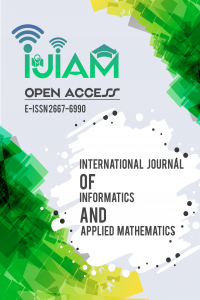Security of Smart-Meters against Side-Channel-Attacks (SCA)
Security of Smart-Meters against Side-Channel-Attacks (SCA)
Security, Smart-Meters, Attacks,
___
- Rial, Alfredo, George Danezis, and Markulf Kohlweiss. ”Privacy-preservingsmart metering revisited.” International Journal of Information Security(2016): 1-31.
- M. Stanojlovic and P. Petkovic, Design and simulation of multiplexer cellresistant to side channel attacks. INDEL 2012.
- Rakers, Patrick, et al. ”Secure contactless smartcard ASIC with DPA pro-tection.”IEEE Journal of Solid-State Circuits 36.3 (2001): 559-565.
- Başlangıç: 2018
- Yayıncı: International Society of Academicians
Physical structure extraction of Algerian baccalaureate transcripts
Abderrahmane KEFALİ, Ahlem OBEİZİ, Chokri FERKOUS
Security of Smart-Meters against Side-Channel-Attacks (SCA)
İqra MUSTAFA, Adeel ANJUM, Kouahla ZİNEDDİNE
A Multiple-Place Algorithm for Sustainable Foraging Scenarios
Abderahmane BENKİRAT, Ouarda ZEDADRA
A New Process for Background Subtraction based on AIRS
Wafa NEBİLİ, Samir HALLACİ, Brahim FAROU
K-means Clustering in R Libraries {cluster} and {factoextra} for Grouping Oceanographic Data
